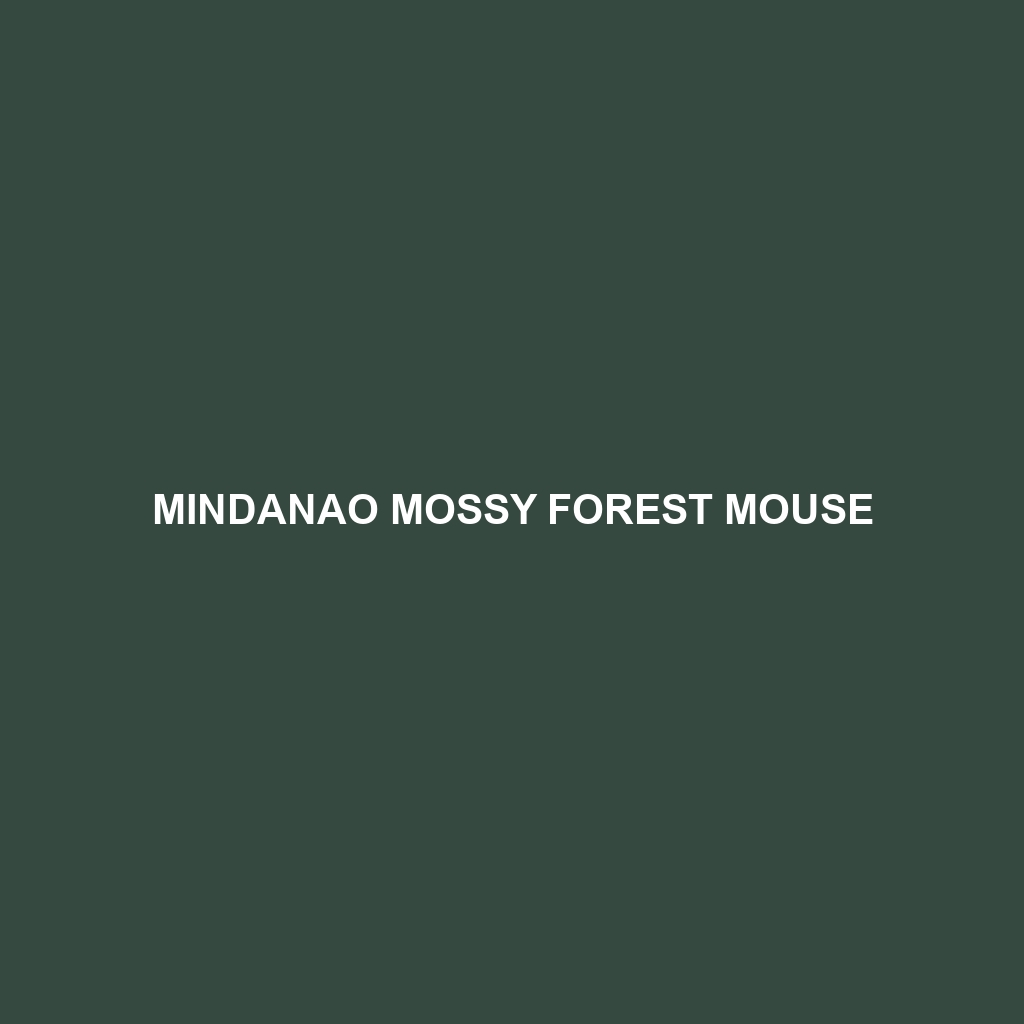Mindanao Mossy Forest Mouse
Common Name: Mindanao Mossy Forest Mouse
Scientific Name: Apomys mindanensis
Habitat
The Mindanao Mossy Forest Mouse is primarily found in the mossy forests of the Philippines, particularly on the island of Mindanao. These rodents inhabit montane ecosystems characterized by high humidity and cool temperatures, typically residing at elevations ranging from 1,000 to 2,300 meters above sea level. The dense vegetation in these forests provides essential cover and nesting materials for the species.
Physical Characteristics
This species features a small to medium body size, measuring approximately 10 to 15 cm in length excluding the tail. The fur is generally a rich brown or grayish color, adorned with lighter underbellies that serve as camouflage against predators. Distinctive attributes include long whiskers and large ears, which aid in better hearing, allowing the Mindanao Mossy Forest Mouse to navigate its lush habitat effectively.
Behavior
The Mindanao Mossy Forest Mouse is primarily nocturnal, exhibiting heightened activity during nighttime hours. It is known for its agile movements, often darting through underbrush and climbing in dense foliage. These mice communicate using a series of chirps and squeaks, which play a critical role in social interactions and territory establishment. The secretive nature of this species also means they employ various hiding techniques to evade predators.
Diet
The diet of the Mindanao Mossy Forest Mouse consists mainly of seeds, fruits, and insects, with a particular preference for soft-bodied invertebrates. This omnivorous diet allows them to adapt to seasonal changes in food availability. Their foraging habits often involve digging and climbing, showcasing their resourcefulness in an environment rich in biodiversity.
Reproduction
The reproductive habits of the Mindanao Mossy Forest Mouse include a breeding season that typically peaks during the warmer months, allowing them to leverage abundant food resources. Female mice give birth to 2 to 6 pups per litter, which are born hairless and helpless. Maternal care is extensive, with mothers diligently nursing their young until they are able to venture out on their own after a few weeks.
Conservation Status
The Mindanao Mossy Forest Mouse is currently classified as *vulnerable* due to habitat loss resulting from deforestation, agricultural expansion, and climate change. Conservation efforts are critical to preserving its remaining habitats and ensuring the survival of this unique species.
Interesting Facts
One fascinating aspect of the Mindanao Mossy Forest Mouse is its ability to blend seamlessly into its environment, thanks to its mossy colored fur. This adaptation not only provides camouflage from predators but also reflects its extraordinary evolutionary path in the rich biodiversity of the Philippines.
Role in Ecosystem
The Mindanao Mossy Forest Mouse plays a vital role in its ecosystem by acting as a seed disperser, which helps maintain the health of forest vegetation. Additionally, it serves as prey for a variety of predators, contributing to the complex food web within its montane habitat. Protecting this mouse is essential for maintaining the ecological balance of the mossy forests it inhabits.
